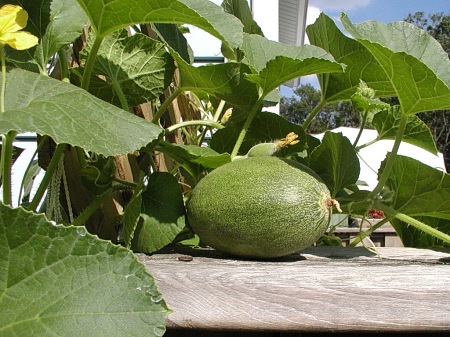 For the past week, one by one, all of my cucumber plants have succumbed to bacteria wilt. There is no cure except to remove the plants and try again next year.
For the past week, one by one, all of my cucumber plants have succumbed to bacteria wilt. There is no cure except to remove the plants and try again next year.
The disease is caused when a bacteria-infested striped cucumber beetle makes a cut on the plant. The bacteria then enters the plant through the wound and causes a slimy ooze to clog the plant making it unable to transport water through it’s system. No matter how much you water it, the plant can’t drink.
Bacteria wilt is always fatal and there is no cure. It’s best to remove the plant immediately and send it away with the landscaping waste. Never add diseased plants to your compost pile.
The most common way to control this pest is to dust the plants with a light coating of insecticide in the early spring to destroy the beetle. I prefer to grow my food organically and rarely use any chemicals. Non-chemical options are to screen the young plants with cheesecloth or row covers, plant later in the spring after the beetle has moved out of the area or try to find a more resistant cultivar.In past years I have waited until the second week of June to plant my cucumbers and have usually evaded this bug. This year I planted earlier to take advantage of the very warm spring here in Chicago. Next year I will once again plant later in the spring and try to track down a more resistant strain of cucumber.
The idea of a greenhouse to start my plants is sounding better and better.













